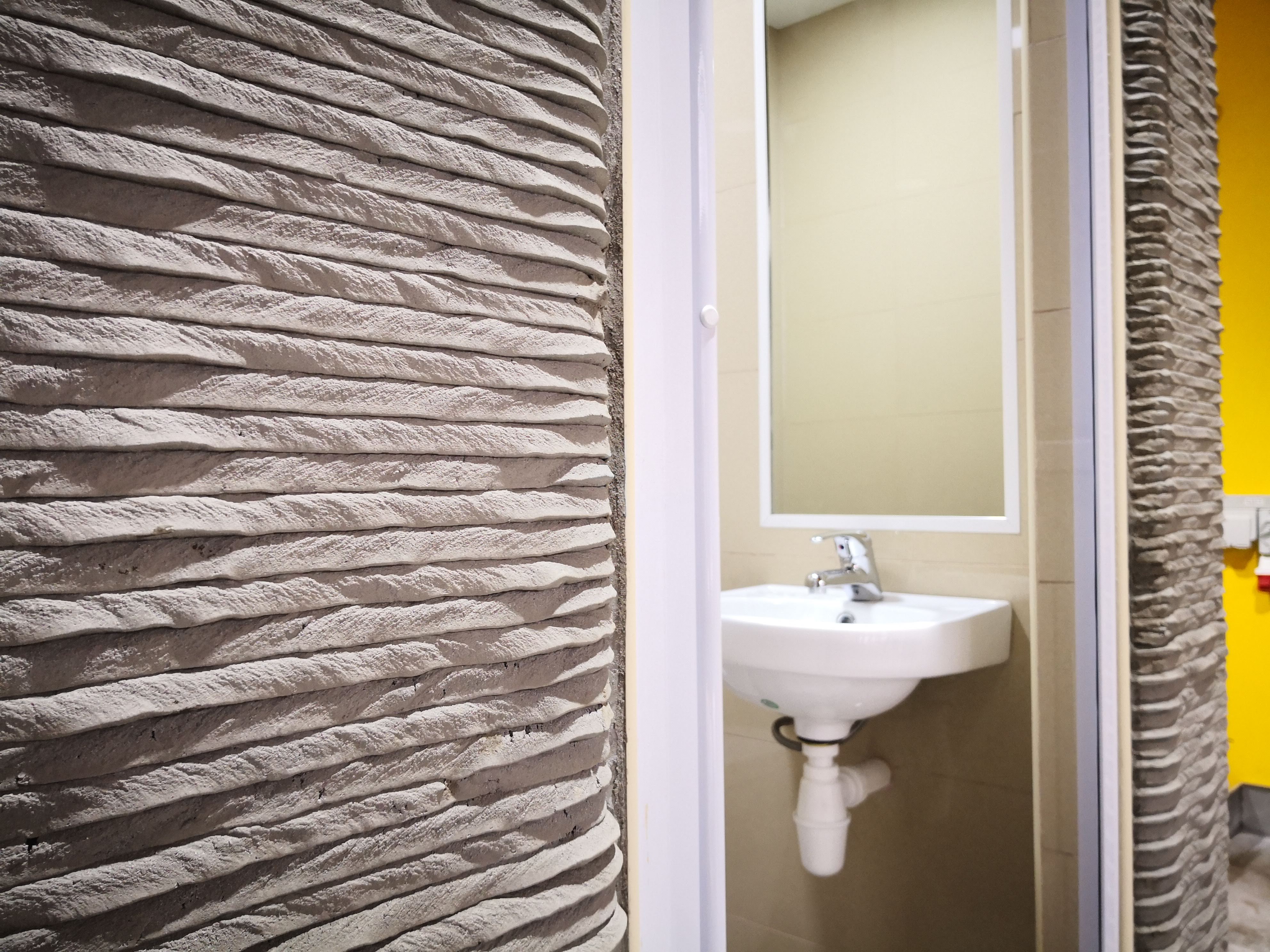A research team from Nanyang Technological University (NTU), Singapore, is 3D printing unfurnished bathroom units in 12 hours or less.
In an effort to improve the production of Prefabricated Bathroom Units (PBUs), the NTU team, as well as Sembcorp Design and Construction and Sembcorp Architects & Engineers, additively manufactured PBUs 30% faster and lighter than conventional PBUs.
Dr. Tan Ming Jen, Associate Professor at the School of Mechanical & Aerospace Engineering, NTU, who partially led this project, said, “By being able to print-on-demand, companies can save on their inventory costs as well a manpower costs, as they don’t have to hold as much stock and their workers can be redeployed to do higher-level tasks.”
“This approach improves the safety of the workplace since robots are doing the construction of the bathroom unit.”
3D printing a bathroom unit
According to the NTU researchers, it has been a requirement for all non-landed residential Government Land Sale (GLS) sites in Singapore to use PBUs in its construction process as of 2014. Thus, to increase productivity for the country’s building and construction industry, additive manufacturing was applied.
Traditionally, PBUs are cast from concrete and fully preassembled and fitted offsite, then lifted and installed in the desired building location. To reduce such labor, a 6-axis KUKA robotic arm capable of 3D printing concrete was utilized in a factory-controlled environment.
Lim Tuang Liang, Executive Director at the Research, Innovation and Enterprise Coordination Office at the National Research Foundation (NRF), an organization which aided the establishment of NTU’s Singapore Centre for 3D Printing, explained:
“Singapore’s strength in advanced manufacturing technologies is deepening not only in the area of research but also in the adoption and deployment of these technologies by our companies. This project is [a] testament to our strong research and translational capabilities in 3D printing.”

Waste reduction with concrete 3D printing
To successfully 3D print a PBU, NTU and Sembcorp developed special concrete mixtures which include green building materials such as geopolymers made from fly ash waste. Following this, new printing and control systems had to be created to enable the desired flow rate of the nozzle for the hardening properties of the concrete.
With a reach of 6 meters in diameter, the KUKA arm carried out the construction in a single build as the concrete mixture was fed to mixers and pumped out of a nozzle mounted on the robotic arm. Furthermore, the team used a W-lattice shape to minimize material wastage as well as add extra strength to the final structure.
It was reported that the 3D printed PCB saved an estimated 60% in yield time and manpower. Concluding their project, the research team 3D printed and outfitted two PBUs. One measuring 1.62m (L) x 1.5m (W) x 2.8m (H), produced in 9 hours; and another measuring 2m (L) x 2.6m (W) x 2.8m (H) in 12 hours.
The larger 3D printed PBU has undergone industry testing and met the required strength and robustness as spelled out in Singapore Standard SS492: 2001. Currently, it is undergoing water absorption and fire resistance tests as part of the requirements under the Building Innovation Panel (BIP) PBU acceptance framework as NTU and Sembcorp ultimately aim to commercialize this technology.

Vote while you still can for the 2019 3D Printing Industry Awards.
Find the latest additive manufacturing construction news by subscribing to our 3D Printing Industry newsletter and following us Facebook and Twitter.
Visit our 3D Printing Jobs board to find out more about opportunities in additive manufacturing.
Featured image shows (From right) Professor Wong Teck Neng; Professor Tan Ming Jen; and Er Lie Liong Tjen, team lead from Sembcorp Design and Construction, and Sembcorp Architects & Engineers; with a 3D printed bathroom unit. Photo via NTU.


